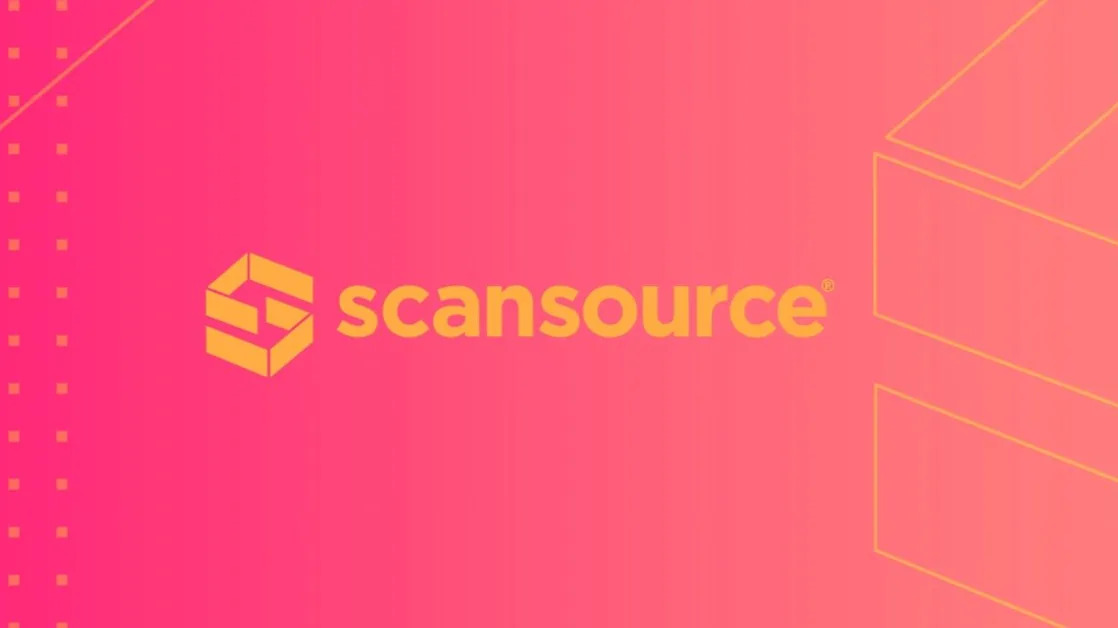Solar power systems company SolarEdge (NASDAQ:SEDG) reported Q1 CY2025 results exceeding the market’s revenue expectations , with sales up 7.4% year on year to $219.5 million. On top of that, next quarter’s revenue guidance ($275 million at the midpoint) was surprisingly good and 10.9% above what analysts were expecting. Its non-GAAP loss of $1.14 per share was 1.7% above analysts’ consensus estimates.
Is now the time to buy SolarEdge? Find out in our full research report .
SolarEdge (SEDG) Q1 CY2025 Highlights:
“I am pleased with the steady progress we made on the SolarEdge turnaround this quarter,” said Shuki Nir, CEO of SolarEdge.
Company Overview
Established in 2006, SolarEdge (NASDAQ: SEDG) creates advanced systems to improve the efficiency of solar panels.
Sales Growth
A company’s long-term sales performance is one signal of its overall quality. Any business can put up a good quarter or two, but the best consistently grow over the long haul. SolarEdge’s demand was weak over the last five years as its sales fell at a 10.4% annual rate. This wasn’t a great result and suggests it’s a low quality business.
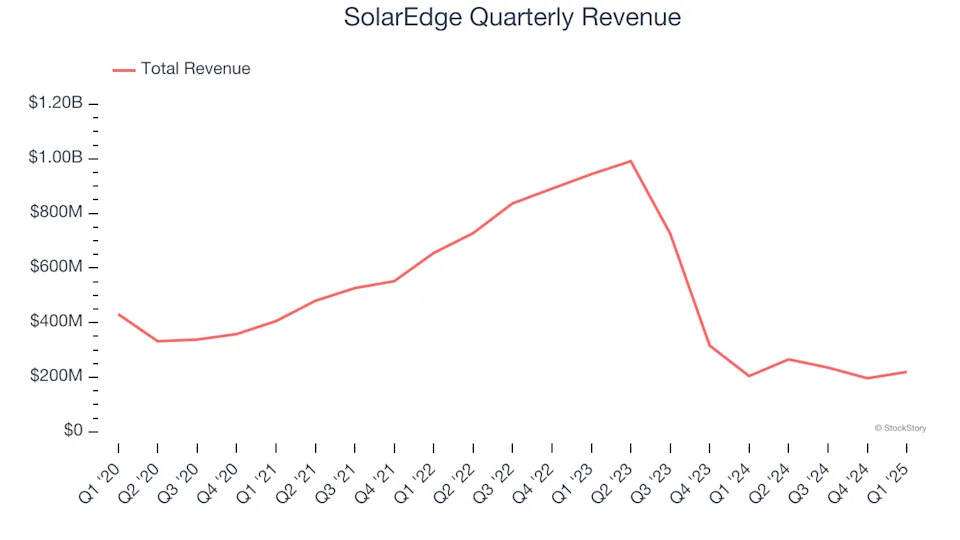
We at StockStory place the most emphasis on long-term growth, but within industrials, a half-decade historical view may miss cycles, industry trends, or a company capitalizing on catalysts such as a new contract win or a successful product line. SolarEdge’s recent performance shows its demand remained suppressed as its revenue has declined by 48.1% annually over the last two years. SolarEdge isn’t alone in its struggles as the Renewable Energy industry experienced a cyclical downturn, with many similar businesses observing lower sales at this time.
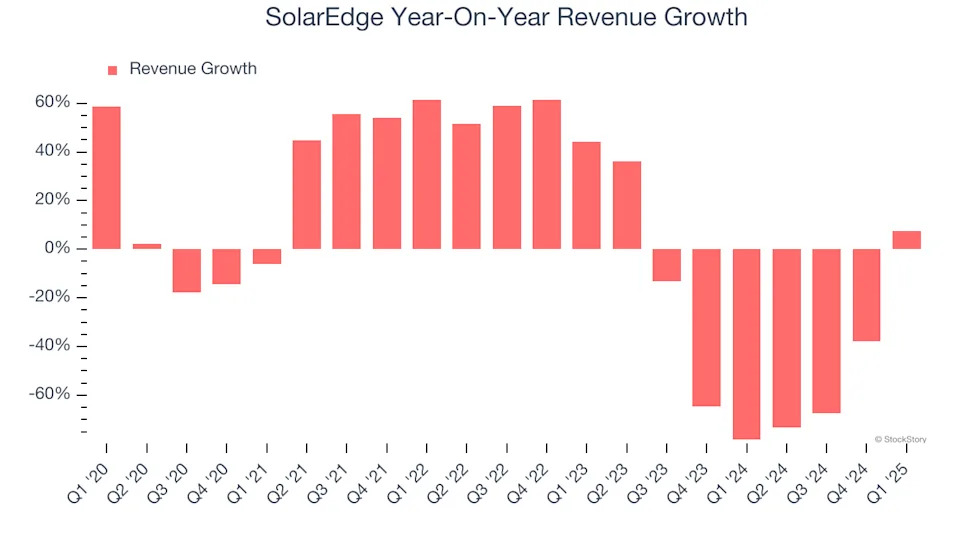
SolarEdge also discloses its number of megawatts shipped, which reached 1,208 in the latest quarter. Over the last two years, SolarEdge’s megawatts shipped averaged 20.4% year-on-year declines. Because this number is higher than its revenue growth during the same period, we can see the company’s monetization has fallen.
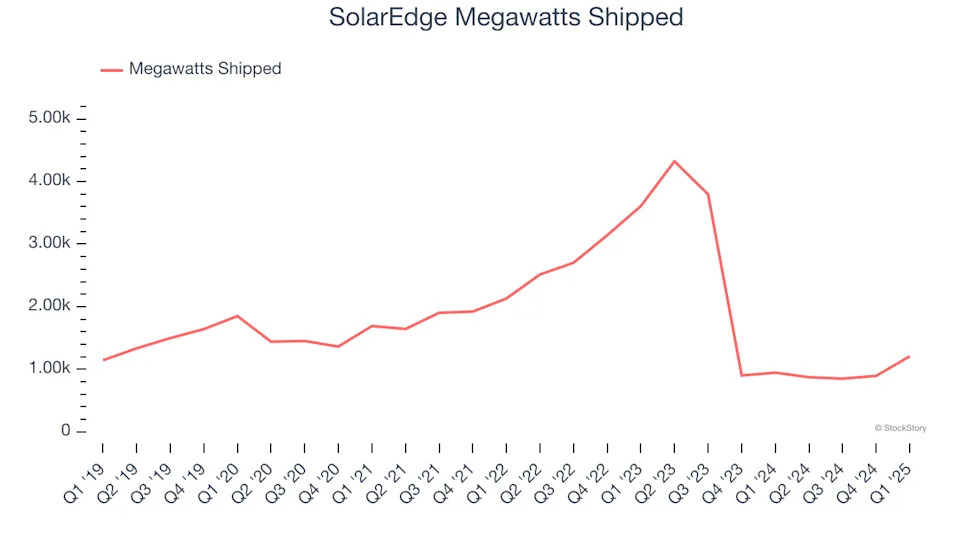
This quarter, SolarEdge reported year-on-year revenue growth of 7.4%, and its $219.5 million of revenue exceeded Wall Street’s estimates by 7.3%. Company management is currently guiding for a 3.6% year-on-year increase in sales next quarter.
Looking further ahead, sell-side analysts expect revenue to grow 23.9% over the next 12 months, an improvement versus the last two years. This projection is eye-popping and indicates its newer products and services will spur better top-line performance.
Today’s young investors likely haven’t read the timeless lessons in Gorilla Game: Picking Winners In High Technology because it was written more than 20 years ago when Microsoft and Apple were first establishing their supremacy. But if we apply the same principles, then enterprise software stocks leveraging their own generative AI capabilities may well be the Gorillas of the future. So, in that spirit, we are excited to present our Special Free Report on a profitable, fast-growing enterprise software stock that is already riding the automation wave and looking to catch the generative AI next .
Operating Margin
Operating margin is an important measure of profitability as it shows the portion of revenue left after accounting for all core expenses – everything from the cost of goods sold to advertising and wages. It’s also useful for comparing profitability across companies with different levels of debt and tax rates because it excludes interest and taxes.
SolarEdge’s high expenses have contributed to an average operating margin of negative 13.6% over the last five years. Unprofitable industrials companies require extra attention because they could get caught swimming naked when the tide goes out. It’s hard to trust that the business can endure a full cycle.
Analyzing the trend in its profitability, SolarEdge’s operating margin decreased significantly over the last five years. SolarEdge’s performance was poor no matter how you look at it - it shows that costs were rising and it couldn’t pass them onto its customers.
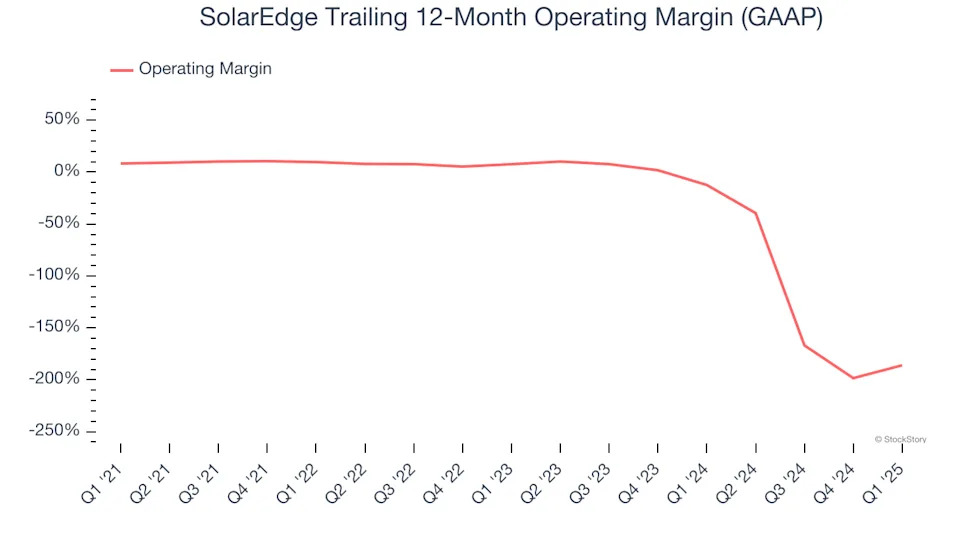
This quarter, SolarEdge generated a negative 46.8% operating margin. The company's consistent lack of profits raise a flag.
Earnings Per Share
Revenue trends explain a company’s historical growth, but the long-term change in earnings per share (EPS) points to the profitability of that growth – for example, a company could inflate its sales through excessive spending on advertising and promotions.
Sadly for SolarEdge, its EPS declined by 46.2% annually over the last five years, more than its revenue. This tells us the company struggled because its fixed cost base made it difficult to adjust to shrinking demand.
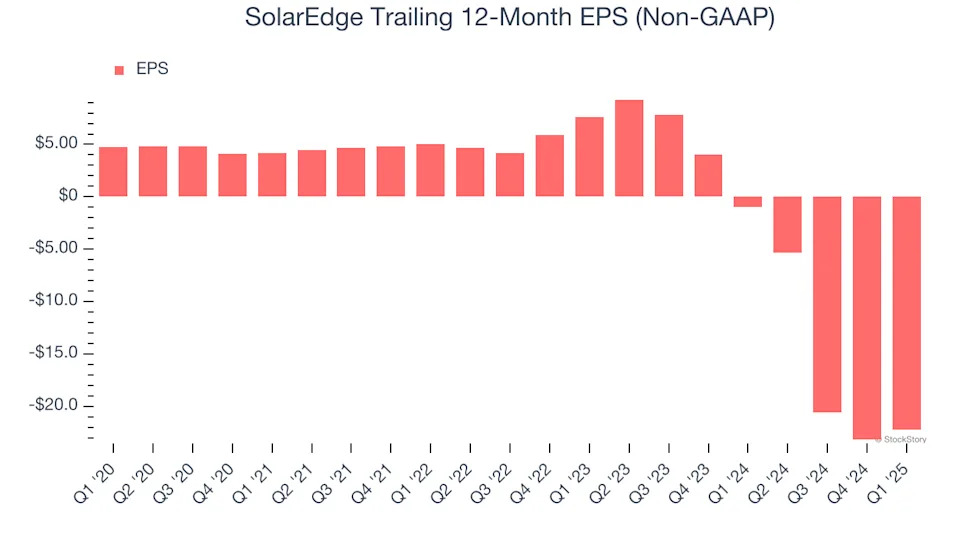
We can take a deeper look into SolarEdge’s earnings to better understand the drivers of its performance. As we mentioned earlier, SolarEdge’s operating margin improved this quarter but declined by 194.3 percentage points over the last five years. Its share count also grew by 11.4%, meaning the company not only became less efficient with its operating expenses but also diluted its shareholders.
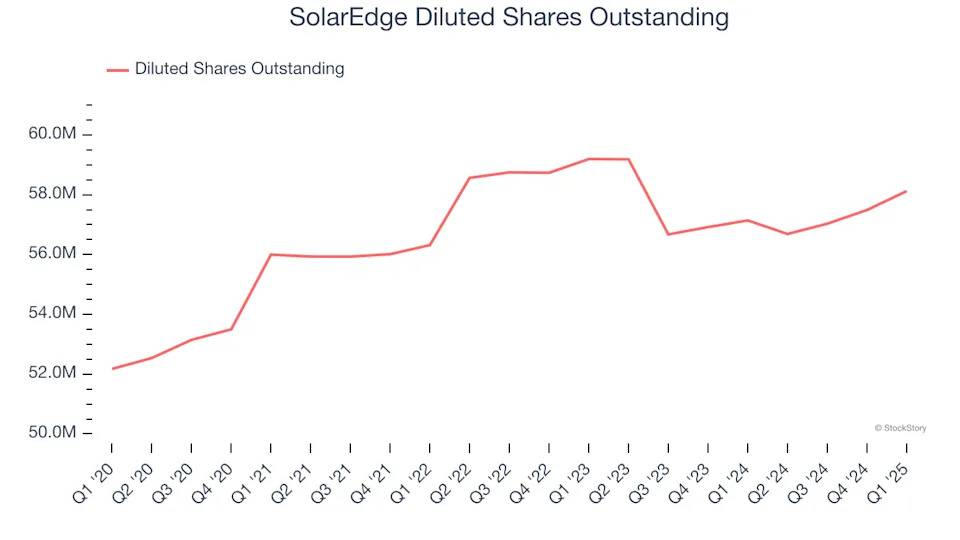
Like with revenue, we analyze EPS over a more recent period because it can provide insight into an emerging theme or development for the business.
For SolarEdge, its two-year annual EPS declines of 122% show it’s continued to underperform. These results were bad no matter how you slice the data.
In Q1, SolarEdge reported EPS at negative $1.14, up from negative $2.12 in the same quarter last year. This print beat analysts’ estimates by 1.7%. Over the next 12 months, Wall Street expects SolarEdge to improve its earnings losses. Analysts forecast its full-year EPS of negative $22.22 will advance to negative $2.08.
Key Takeaways from SolarEdge’s Q1 Results
We were impressed by how significantly SolarEdge blew past analysts’ EBITDA expectations this quarter. We were also excited its revenue outperformed Wall Street’s estimates by a wide margin. Zooming out, we think this was a good print with some key areas of upside. The stock traded up 14.2% to $14.76 immediately following the results.
Indeed, SolarEdge had a rock-solid quarterly earnings result, but is this stock a good investment here? We think that the latest quarter is just one piece of the longer-term business quality puzzle. Quality, when combined with valuation, can help determine if the stock is a buy. We cover that in our actionable full research report which you can read here, it’s free .





